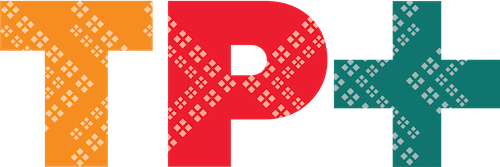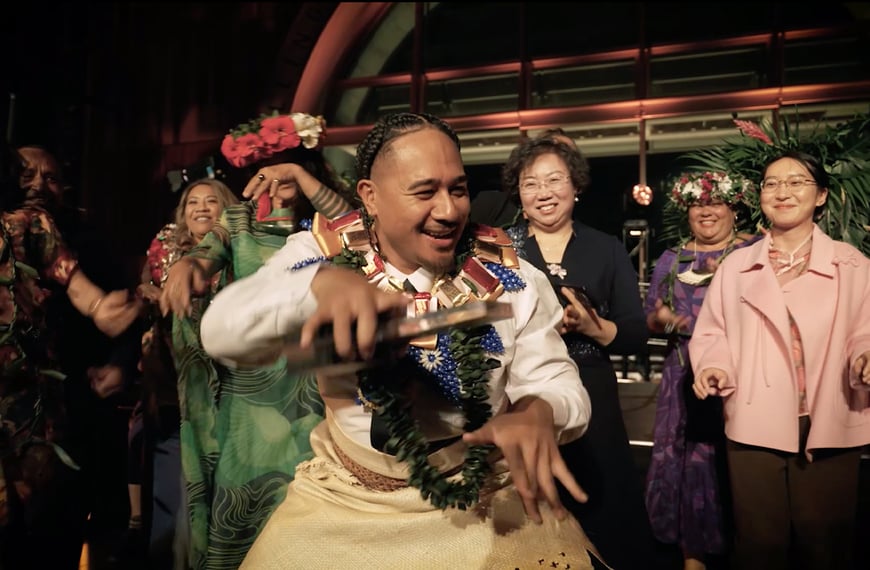As the most culturally diverse city in Aotearoa, Tāmaki Makaurau contains a rich migrant history. Project Curator Pacific Andrea Low explores the city’s Pacific history in Auckland Museum’s latest exhibition, Tāmaki Herenga Waka: Stories of Auckland.
It’s not often you get given a personal tour of a museum exhibition by one of its curators but today is my lucky day.
We roam the corridors together with Andrea Low, listening intently as she shares precious stories about the tāonga, measina and koloa that fills the galleries.
As the Project Curator Pacific of Auckland’s latest exhibition Tāmaki Herenga Waka: Stories of Auckland, Andrea is particularly passionate about the city’s Pasifika history, “I take the approach that every story that I am telling counter-narrative,” she shares.
“It’s really important to me to tell stories that mitigate some of the deficit narratives that tell a particular story about Pacific people’s lives in Tāmaki and have done for a long time.”
“So I’m trying to mitigate those things with the counter-narratives, multiple types of stories, the biographies, first person narratives – let people tell their own stories through different formats.”
We learn about the 1890 arrival of the Samoan-German family the Kronfelds, and the Melanesian Missionary Building (also known as St Andrew’s College) built in 1859, which housed hundreds of students.
“These young students came from the Solomon Islands, Vanuatu, New Caledonia in the 1850s and 60s,” Andrea explains.
“They were meant to come to Tāmaki, learn about Christianity and take it back with them to the islands.”
An ambrotype and little shells tell a small part of their history. Found inside the rafters of the building, the shells were keepsakes the young students brought with them from their island homes. The building itself is heritage protected and is known today as the Mission Bay Pavilion, a restaurant and private function room.
Associated with Aotearoa’s Pacific diaspora, the union steamship TSMV Matua is also included in the exhibition, “people feel very affectionate about the Matua,” Andrea says.
The Matua’s history is told via a fantastic digital display, showcasing memorabilia and interviews with people who travelled on board the ship or their descendants.
“There’s the story of Keva Low. After the war, he came over in 1946 and he happens to be my father as well,” she smiles.
“Keva’s story is told through the eyes of descendants, and what I think I’d like people to be able to take away from that is generate inter-generational conversations about ‘how did you come here?’ or ‘how did your great-grandparents come here?'”
There’s so much to take in as we continue to traverse through a variety of displays. We stop at the wall-sized photograph of Bill Sevesi and His Islanders performing at the famed Orange Ballroom on Newton Rd.
The social hub for Pacific Islanders in the 1950s and 60s, people would flock to the hall to hear Sevesi and the band play all their favourite island jams and latest hits. I smile to myself as I recall the stories my Grandmother used to tell of her nights dancing in the hall, dressed to the nines, and having the best time with my Grandfather.
“Pacific people might say about the Orange Ballroom, that’s where their grandparents met,” Andrea smiles.
“I love talking to people about their family histories or experiences they might’ve had.”
As our tour comes to a close, I take a moment to reflect on what I’ve seen heard and felt. Listening to Andrea recall all of these marvellous stories with genuine passion and empathy, I’ve laughed and cried and gawked in amazement.
I don’t know why I never saw it before, but I’ve learnt there is a strong Pacific thread that is woven into the history of this vibrant city, and it suddenly makes me feel quite emotional.
“I think emotion is a really important part of the exhibition because it’s a connector,” Andrea explains.
“It shows a depth of feeling, it can reveal values, it can reveal a history that hasn’t been told before. Those are emotional things for Pacific people because our histories haven’t been told with this kind of power.”
“The way the stories are knit together means it’s not just a story about Pacific people. It’s about Pacific in the context of Tāmaki as an evolving and shaping city.”
The Tāmaki Herenga Waka: Stories of Auckland exhibition is now open at the Auckland War Memorial Museum.










